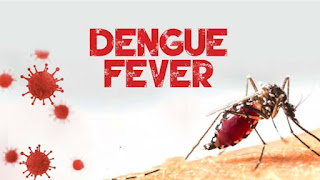Battling Dengue Fever: Unraveling the Mysteries of the Mosquito Menace
Introduction
Dengue fever a mosquito borne viral infection has long been a thorn in the side of public health authorities around the world. This silent menace carried by the Aedes mosquito has plagued tropical and subtropical regions for centuries. As climate change urbanization and global travel reshape our world dengue fever is emerging as an increasingly pressing concern. In this article, we will review the complications of dengue fever its transmission symptoms prevention and ongoing efforts to combat this persistent public health threat.Dance of the Aedes mosquito
At the heart of the dengue epidemic is the Aedes mosquito. Unlike its more notorious cousin the Anopheles mosquito responsible for spreading malaria, the Aedes mosquito is primarily a daytime biter. They are stealthy and opportunistic often hiding in and around human settlements. This makes them exceptionally efficient at transmitting the dengue virus as they easily bite infected individuals and then feed on healthy hosts.Dengue fever: a spectrum of symptoms
Dengue fever is not a disease. In fact it presents itself in a variety of forms ranging from mild flu like symptoms to severe and potentially life threatening complications. A typical dengue infection may manifest as high fever severe headache joint and muscle pain itching and bleeding tendencies. Dengue is often called breakbone fever because of this range of symptoms.However a more severe form of the disease known as dengue hemorrhagic fever or dengue shock syndrome can occur in a few percent of cases. These severe forms can lead to excessive bleeding shock organ failure and in worst cases death.
A Race Against Time: Diagnosis and Treatment
Early diagnosis is crucial for effective control of dengue fever. Doctors often use clinical symptoms and blood tests to confirm the presence of the virus. Although there is no specific antiviral treatment for dengue supportive care can significantly improve the patients chances of recovery. Intravenous fluids pain relief and close monitoring are essential components of dengue management.Avoid dengue stings
Prevention is the most powerful weapon in the fight against dengue fever. Given that no vaccine is available for all virus serotypes public health strategies focus on mosquito control and individual protection. These steps includeMosquito Control
Eliminating mosquito breeding sites such as standing water in containers is a primary strategy. Communities often engage in systematic efforts to reduce mosquito populations.
Use of insect repellents
Applying insect repellents containing DEET picaridin or other recommended ingredients can help protect individuals from mosquito bites.
Wear protective clothing
Long sleeved shirts and pants can reduce skin exposure to mosquito bites.
Bed nets and screens
Sleeping under an insecticide treated bed net and ensuring window and door screens can provide a barrier against mosquitoes.
Community Involvement
Raising awareness of dengue prevention methods and involving communities in mosquito control efforts is critical.
Still, several challenges remain. Climate change is expanding the geographic range of Aedes mosquitoes making previously unaffected areas vulnerable to dengue outbreaks. Moreover controlling mosquito populations in densely populated urban areas is a difficult task.
Global Endeavors and Challenges
The fight against dengue fever is a global effort. Organizations such as the World Health Organization (WHO) are working tirelessly to reduce the impact of the disease. Researchers are also exploring innovative approaches including developing vaccines and genetically modified mosquitoes that cannot transmit the virus.Still, several challenges remain. Climate change is expanding the geographic range of Aedes mosquitoes making previously unaffected areas vulnerable to dengue outbreaks. Moreover controlling mosquito populations in densely populated urban areas is a difficult task.
The global burden of dengue
Dengue fever is often called the forgotten epidemic because of its widespread but often underestimated impact. According to the World Health Organization about 390 million people are infected with dengue every year nearly half of the worlds population is at risk of contracting the disease. This staggering prevalence places a heavy burden on the health care system especially in countries where dengue is endemic.A complex virus with multiple serotypes
Dengue virus comes in four distinct serotypes named DEN-1 DEN-2 DEN-3 and DEN-4. Although infection with one serotype usually confers lifelong immunity to that particular serotype it increases the risk of severe disease if a person is subsequently infected with a different serotype. This phenomenon known as antibody dependent enhancement makes vaccine development particularly challenging as a vaccine must protect against all four serotypes to be effective.Economic loss of dengue
Beyond its direct health effects dengue fever imposes a significant economic burden on affected countries. Costs associated with dengue include medical costs lost productivity due to the disease and costs related to mosquito control programs. In some cases dengue outbreaks can devastate local economies especially those dependent on tourism.Dengue and climate change
The geographic spread of dengue is closely related to climate change. Rising global temperatures and changing rainfall patterns create ideal breeding conditions for Aedes mosquitoes. As these mosquitoes expand their habitat range areas that were previously considered low risk for dengue are now at increased risk. This trend highlights the inter connected of climate health and ecosystems.Vaccination efforts and hope on the horizon
Although dengue vaccine development has been challenging there have been promising successes. Dengvaxia manufactured by Sanofi Pasteur is one such vaccine that provides partial protection against all four serotypes. However its use is currently recommended only in individuals previously infected with dengue to avoid the risk of ADE.researchers are also exploring new methods such as using genetically modified mosquitoes that carry a bacterium called wolbachia. These mosquitoes when released into the wild can reduce the ability of aedes mosquitoes to transmit dengue. This innovative strategy offers hope for sustainable long term mosquito control.



.jpg)



Post a Comment